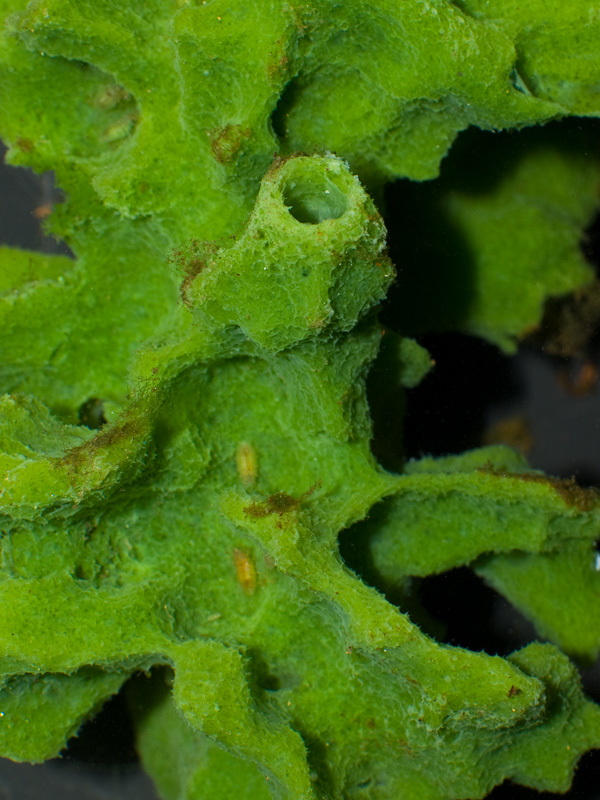Freshwater Oddity (Part 1)

This freshwater sponge (Spongilla sp.) was found encrusting a submerged tree branch near the shoreline of a small lake in Maine. Note the small oval arthropods living on the surface of the sponge near the middle of the photo.
I recently returned from a short vacation to New Hampshire/ Maine to see family and stomp the formative grounds (and waters) of my youth. While paddling around the small lake that I spent my summers, I found an abundance of this freshwater sponge (Spongilla sp.) growing submerged near the shoreline. Growing on rocks it has a flat, encrusting morphology. On submerged branches it forms lumpy encrustations. And on shallow muddy bottoms it sends up skinny tendrils. The tissue is colored bright green due to a symbiotic association with algae. While you might find yourself thinking “freshwater sponge? really?”, these sponges can be found across most of North America from Alaska south to Florida in relatively still freshwater lakes and ponds. As a testament to their adaptability, this sponge can ‘degenerate’ into a dormant state, forming tiny cysts called gemmules. These gemmules act as ‘seeds’ when favorable conditions return. The sponges reproduce sexually in the summertime and release free swimming larvae. Next time you find yourself at a lake, take a closer look at what you might otherwise think is just some lumpy ‘algae’.
